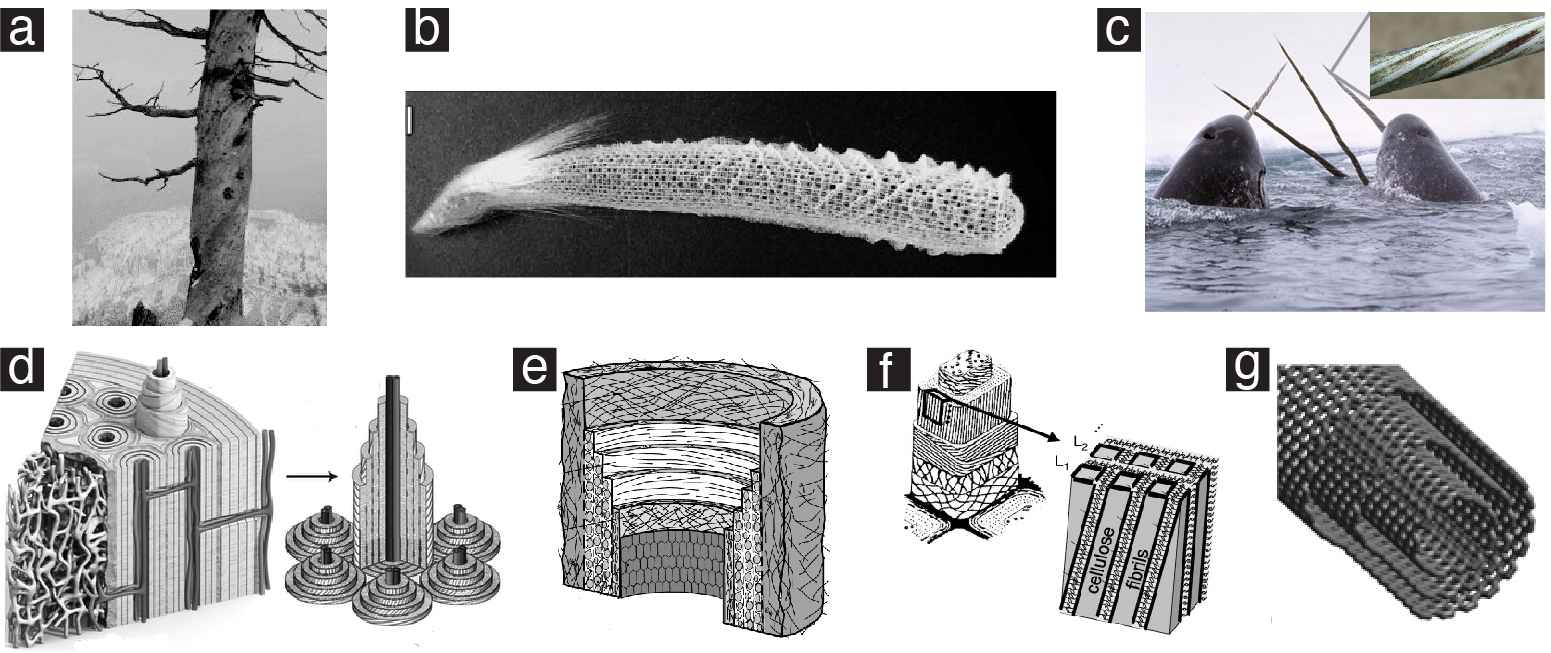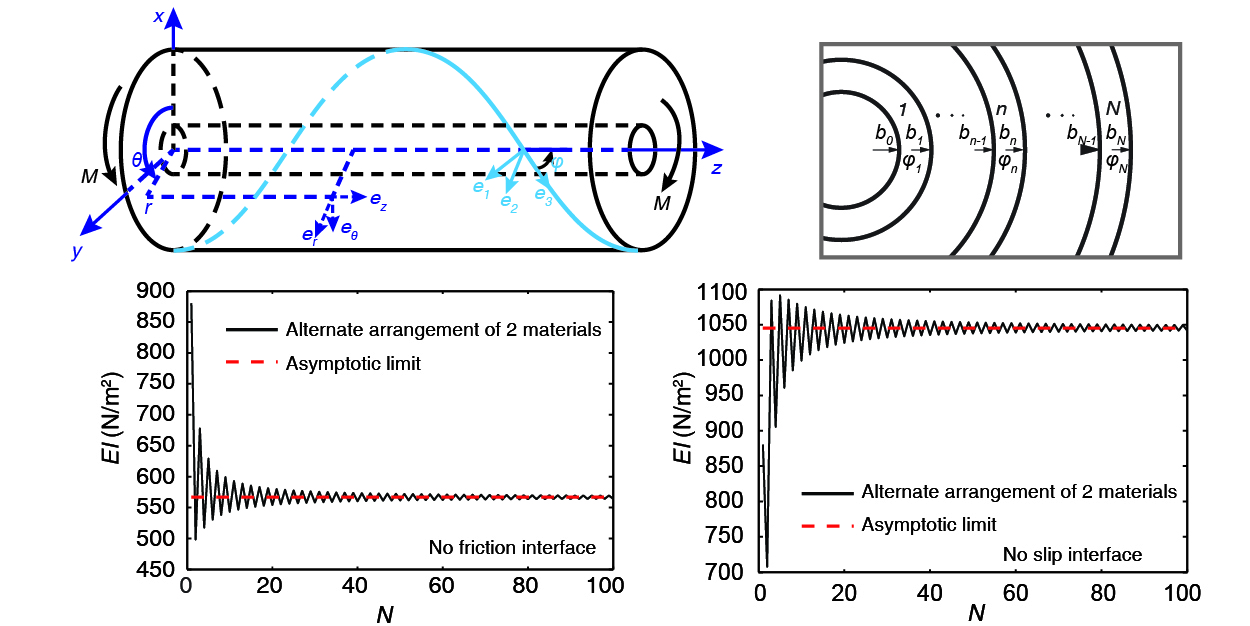Homogenization of elastic property
Effect bending stiffness of multilayered concentric composite with helical symmetry
Topic A: Effective bending stiffness of multilayered concentric composite
Structural biomaterials are of growing interest in material and mechanics communities due to their remarkable mechanical performances, which serve as fascinating model material systems for the discovery of new mechanics of materials principles. These biologically synthesized materials are usually stiff and used for load bearing applications which include defense and protection inside the creatures, such as mother of pearl. There exist a large number of structural biomaterials with cylindrical structures and displaying a helical symmetry. Representative examples include the trunk of Ponderosa pine, the skeleton of sea sponge, and the tusk of narwhal. Some synthetic materials such as multiwalled carbon nanotube and filament-wound composite pipes have multilayer helical structure as well. These composite materials are essentially anisotropic and heterogeneous. The helical symmetry leads the structures to show helically orthotropic properties. To understand and analyze the overall deformation of such materials with multilayer anisotropic cylindrical structures requires the knowledge of effective (i.e., homogenized) elastic properties.

We performed a homogenization analysis to obtain effective bending stiffness of a cylindrical composite consisting of helically orthotropic layers with spatially periodic arrangement of elastic properties. One of the most important results of our work is that it is found that the effective bending stiffness of perfectly bonded multilayer composite consisting of heterogeneous materials could be higher than that of the structure made up with the corresponding homogeneous constituent material, breaking the rule of mixtures which is an important and common approach to estimate elastic properties of composite materials. The result sheds light on understanding the relationship between macroscale mechanical properties and microscale architectures in a large number of structural biomaterials which have cylindrical structures and display a helical symmetry.
